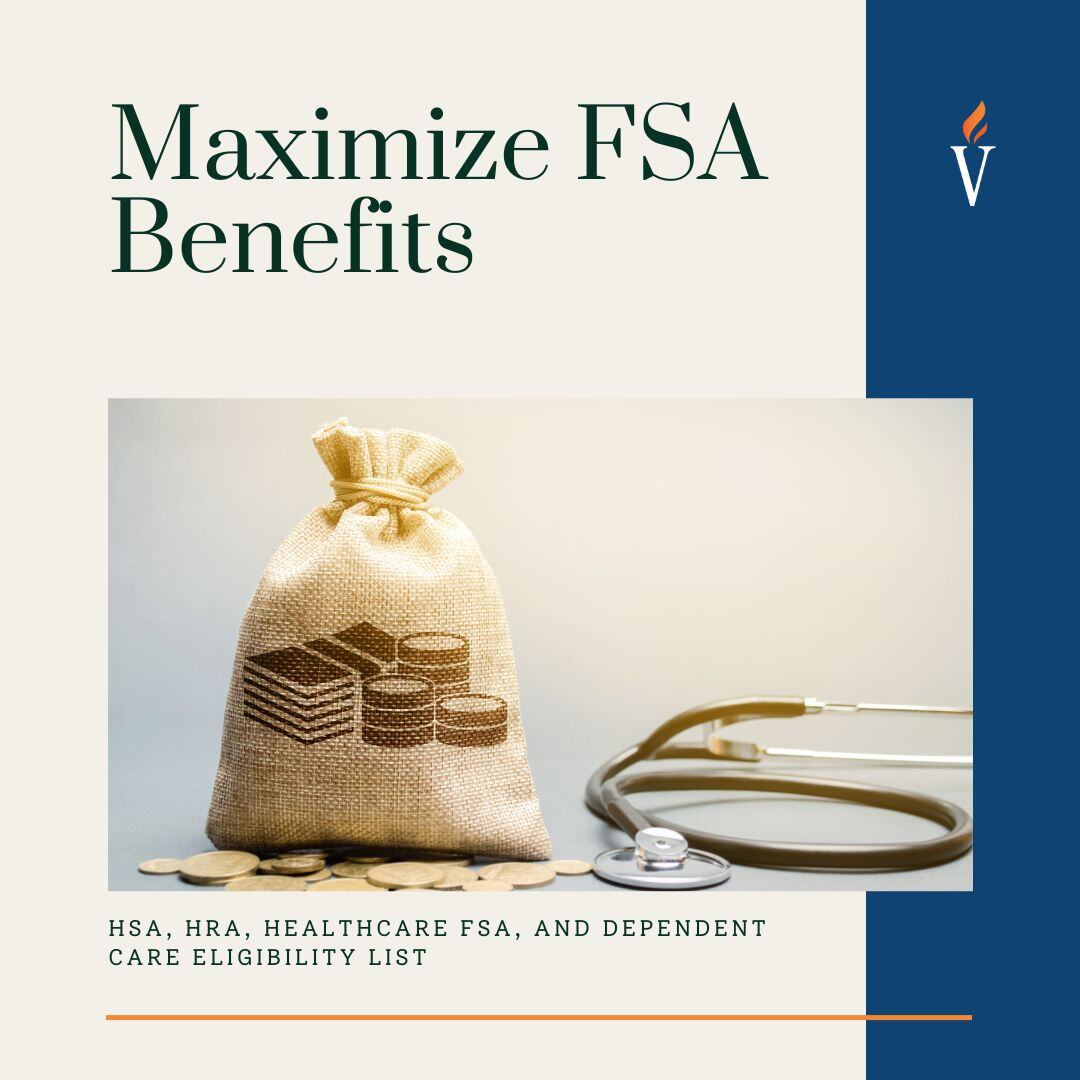Exciting Health Insurance Changes Coming in 2026 for Johnson City, TN
As your local health insurance professional in Johnson City, TN, I'm constantly monitoring the ever-changing landscape of healthcare legislation. My...
12 min read
 Andrew Darlington
:
October 1, 2025 at 2:04 PM
Andrew Darlington
:
October 1, 2025 at 2:04 PM
.png)
Table of Contents
As we look ahead, planning for future healthcare costs is one of the smartest financial moves you can make. Here at Veritas Risk Management, we're always monitoring the latest changes to help our clients in Johnson City, Kingsport, and Bristol leverage the best tools available. The official 2026 limits for Health Savings Accounts (HSAs) have been released, and they represent a fantastic opportunity to increase your tax-free savings.
This comprehensive guide will walk you through the new 2026 numbers, the powerful benefits of an HSA, and a game-changing rule update that makes HSAs accessible to more people in East Tennessee than ever before.
The IRS has increased the amount you can contribute to your HSA for 2026, allowing you to shelter more of your hard-earned money from taxes.
Catch-Up Contribution: If you're age 55 or older, you can still contribute an additional $1,000 per year. For more information, click here.
To be eligible to contribute to an HSA, you must be enrolled in a qualified High-Deductible Health Plan (HDHP). These plans have lower monthly premiums in exchange for higher deductibles. For 2026, an HDHP must meet the following requirements:
If you're new to HSAs, think of them as a supercharged savings account for healthcare. They are one of the most powerful savings vehicles available due to their unique triple-tax advantage: 🤩
Unlike an FSA, the money in your HSA is yours forever—it never expires and rolls over year after year, making it an excellent long-term investment and supplemental retirement account.
This is a major development we're especially excited about. Starting in 2026, a new law requires that most Bronze and Catastrophic plans on the Health Insurance Marketplace be treated as HSA-qualified HDHPs. 🎉
What does this mean for you? It means that even the most affordable plans on the Marketplace will now give you the ability to open and contribute to a powerful Health Savings Account. This change makes the financial and health benefits of an HSA accessible to more individuals and families in our community than ever before.
Health Savings Accounts (HSAs) represent a potent financial instrument for managing healthcare expenditures, distinguished by a triple tax advantage: contributions are typically tax-deductible, earnings and interest on investments within the HSA grow tax-free, and withdrawals for qualified medical expenses are also tax-free. This unique combination positions HSAs not merely as savings vehicles but as strategic components of comprehensive financial planning.
The Internal Revenue Service (IRS) conducts an annual review of HSA contribution limits and the defining parameters for High Deductible Health Plans (HDHPs). These adjustments are primarily made to reflect inflation and evolving healthcare costs. Such modifications are significant as they directly influence the maximum allowable savings in an HSA and determine which health plans enable individuals to make these contributions. Awareness of these annual changes is crucial for individuals and families to maintain compliance and optimize their savings potential. Staying informed allows individuals to proactively adjust their savings strategies and health plan choices, rather than reactively discovering missed opportunities or potential compliance issues later. This proactive stance is a key benefit, as the IRS announces these changes annually , impacting contribution amounts and qualifying plan criteria. Knowledge of these changes before open enrollment periods or the commencement of a new year facilitates planned adjustments to contributions or plan selections, ultimately leading to optimized financial and healthcare outcomes.
While we do not directly provide HSA accounts, we can assist you with the selection and comprehension of HSA-compatible HDHPs. These plans are the essential gateway for individuals and businesses seeking to leverage the benefits of an HSA.
The IRS has HSA contribution limits for the 2025 calendar year which is an increase from 2024. These adjustments allow for greater tax-advantaged savings to cover healthcare costs.
A. 2025 Self-Only HDHP Coverage Limit For the calendar year 2025, individuals enrolled in an HDHP with self-only coverage will be permitted to contribute up to $4,300 to their HSA. This figure represents the maximum amount an individual covering only themselves under a qualifying HDHP can contribute for the year.
B. 2025 Family HDHP Coverage Limit Individuals with family HDHP coverage (covering themselves and at least one other eligible family member) can contribute up to $8,550 to their HSA in 2025.
C. The Unwavering $1,000 Catch-Up Contribution (Age 55+) A consistent provision allows individuals aged 55 or older by the end of the tax year, and who are not enrolled in Medicare, to contribute an additional $1,000 to their HSA. This "catch-up" contribution is designed to help those approaching retirement age further bolster their healthcare savings. It is important to note that this $1,000 amount is fixed by statute and, unlike the general contribution limits, does not undergo annual adjustments for inflation. While this $1,000 catch-up remains a valuable benefit, its relative purchasing power and impact compared to the main contribution limits may diminish slightly over time. As the primary contribution limits increase annually with inflation (e.g., the self-only limit rising from $4,150 in 2024 to $4,300 in 2025), the static $1,000 catch-up constitutes a smaller percentage of the total potential contribution. This is a subtle but noteworthy long-term consideration for financial planning, emphasizing that while still beneficial, its relative boost decreases compared to a scenario where it also indexed for inflation.
D. Important Note on Spousal Catch-Up Contributions If both spouses in a marriage are age 55 or older, are otherwise eligible (meaning not enrolled in Medicare), and are covered by an HDHP, each spouse can make a $1,000 catch-up contribution. A critical stipulation is that these contributions must be deposited into their respective, separate HSA accounts. One spouse cannot contribute a combined $2,000 catch-up amount into a single HSA, even if it's a family plan. This distinction is crucial for compliance and for maximizing the couple's total potential tax-advantaged savings. Some HSA administrators offer specific spousal accounts to facilitate this.
E. Reminder: Employer Contributions Count! It is essential for HSA holders to remember that any contributions made by an employer directly into an employee's HSA are included in and count towards the annual contribution limits. Consequently, the amount an employee can personally contribute is reduced by the sum of the employer's contribution. For instance, if the 2025 self-only limit is $4,300 and an employer contributes $1,000, the employee may only contribute an additional $3,300 from their own funds, unless they are eligible for the age 55+ catch-up contribution.
A direct comparison between the 2025 and 2024 HSA contribution limits clearly illustrates the enhanced savings opportunities available in the upcoming year. These increases reflect the IRS's adjustments for inflation, ensuring that the real value of these tax-advantaged accounts is maintained relative to rising costs.
Table 1: Comparative Table: HSA Contribution Limits (2025 vs. 2024)
| Coverage Type | 2024 Limit | 2025 Limit | Change |
|---|---|---|---|
| Self-Only | $4,150 | $4,300 | +$150 |
| Family | $8,300 | $8,550 | +$250 |
| Age 55+ Catch-Up | $1,000 | $1,000 | No Change |
The $150 increase for self-only coverage and the $250 increase for family coverage might appear modest on an annual basis. However, the cumulative effect of consistently contributing the maximum allowable amount, including these incremental increases, can be substantial over the long term. When these funds are invested within the tax-sheltered environment of an HSA, even small additional annual contributions can compound significantly over many years. For example, an extra $250 contributed annually for 20 years amounts to an additional $5,000 in principal contributions, which, when combined with potential tax-free investment growth, can lead to a considerably larger sum available for future healthcare needs. This demonstrates the long-term strategic benefit of maximizing contributions, inclusive of these seemingly small annual adjustments.
To be eligible to contribute to an HSA, an individual must be enrolled in a qualifying High Deductible Health Plan (HDHP). The IRS, through Revenue Procedure 2024-25, has also updated the minimum deductible and maximum out-of-pocket (OOP) thresholds that define an HSA-qualified HDHP for 2025.
A. What Makes an HDHP "HSA-Qualified"? Not every health plan with a high deductible is automatically eligible for HSA contributions. A plan must adhere to specific IRS criteria concerning its minimum annual deductible and its maximum annual out-of-pocket expenses. A key feature of HSA-qualified HDHPs is the allowance for certain preventive care services to be covered before the plan's deductible is met, without compromising the plan's HSA-eligible status. IRS Notice 2004-23 and subsequent guidance, such as Notice 2024-75, provide safe harbors for these preventive care benefits. This means services like routine physical examinations, immunizations, and various health screenings can often be accessed with no or lower cost-sharing, even if the main deductible has not been satisfied. This provision makes HDHPs more practical for accessing essential preventive healthcare.
B. 2025 HDHP Minimum Annual Deductibles For a health plan to be HSA-qualified in 2025, its annual deductible must not be less than:
C. 2025 HDHP Maximum Annual Out-of-Pocket (OOP) Expenses Furthermore, the total annual out-of-pocket expenses for an HSA-qualified HDHP in 2025 (which includes deductibles, copayments, and coinsurance, but excludes plan premiums) must not exceed:
D. Comparing HDHP Parameters: 2025 vs. 2024 The following table illustrates the changes in HDHP requirements from 2024 to 2025:
Table 2: Comparative Table: HDHP Requirements (2025 vs. 2024)
| HDHP Requirement | Coverage Type | 2024 | 2025 | Change |
|---|---|---|---|---|
| Minimum Annual Deductible | Self-Only | $1,600 | $1,650 | +$50 |
| Family | $3,200 | $3,300 | +$100 | |
| Maximum Annual Out-of-Pocket Limit | Self-Only | $8,050 | $8,300 | +$250 |
| Family | $16,100 | $16,600 | +$500 |
The upward adjustments in both minimum deductibles (e.g., +$50 for self-only, +$100 for family in 2025) and maximum out-of-pocket limits (e.g., +$250 for self-only, +$500 for family in 2025) for HDHPs highlight an important trend. As individuals enrolled in HDHPs may face potentially greater upfront healthcare costs or a higher overall cap on their expenses, the simultaneous increase in HSA contribution limits becomes even more significant. The increased HSA limits provide a direct, tax-efficient mechanism to save for and cover these potentially higher out-of-pocket costs associated with the updated HDHP parameters. Thus, the changes in HDHP requirements and HSA contribution limits are interconnected and designed to work in tandem, ensuring the continued viability and attractiveness of the HDHP/HSA strategy for consumers managing healthcare expenses.
E. Other Key HSA Eligibility Rules (Briefly) Beyond enrollment in a qualifying HDHP, several other criteria must be met to contribute to an HSA:
These adjustments to HSA limits and HDHP parameters carry several implications for individuals and families as they plan their health insurance and savings strategies.
A. Enhanced Opportunity for Tax-Advantaged Savings The primary impact of increased HSA contribution limits is the expanded capacity to shield more income from taxation. Contributions are typically tax-deductible, investment earnings within the HSA grow tax-free, and withdrawals for qualified medical expenses are also tax-free. Over time, particularly if HSA funds are invested and preserved for future needs rather than spent on current medical expenses, HSAs can evolve into a significant vehicle for funding healthcare costs in retirement.
B. The Critical Choice: Selecting the Right HDHP It is crucial to understand that not all health plans marketed as "high deductible" are necessarily HSA-qualified. A plan must precisely meet the IRS criteria for minimum deductibles and maximum out-of-pocket expenses, as detailed in Section IV. We play a vital role in helping our clients navigate the available plan options to make sure their chosen HDHP is indeed HSA-compatible and aligns with their specific healthcare needs and financial circumstances.
C. Balancing Premiums and Out-of-Pocket Costs HDHPs are generally characterized by lower monthly premiums compared to traditional health plans like PPOs or HMOs. However, they also feature higher deductibles and out-of-pocket maximums. The HSA is designed to help individuals manage these higher potential out-of-pocket costs by allowing them to save money on a pre-tax basis. A comprehensive assessment involves considering the "total potential cost," which includes annual premiums plus the maximum out-of-pocket exposure, offset by the tax savings generated from HSA contributions.
D. Understanding Contribution Nuances Certain specific IRS rules can affect HSA contributions. The "last-month rule," for example, allows individuals who are HSA-eligible on December 1st of a given year to contribute the full annual maximum for that year, regardless of when they became eligible during the year. However, this rule comes with a "testing period" requirement, mandating that the individual remain HSA-eligible for the entirety of the following calendar year to avoid potential taxes and penalties on a portion of the contributions. For individuals not eligible for the entire year and not utilizing the last-month rule, contributions generally must be prorated based on the number of months of HSA eligibility. These rules can be complex, and individuals may benefit from professional guidance.
E. Avoiding Pitfalls: Over-contributions and Non-Qualified Withdrawals Exceeding the annual HSA contribution limit can result in a 6% excise tax on the excess amount for each year it remains in the account. Additionally, withdrawing funds from an HSA for expenses that are not considered "qualified medical expenses" by the IRS, before reaching age 65, will typically result in the withdrawn amount being subject to income tax, plus a 20% penalty. After age 65, non-qualified withdrawals are subject to income tax but not the additional penalty, treating the HSA somewhat like a traditional IRA for non-medical distributions.
While the 2026 changes generally enhance the financial benefits of HSAs, the suitability of an HDHP/HSA strategy remains highly dependent on an individual's or family's specific circumstances. Factors such as current health status, frequency of medical care utilization, overall financial situation, risk tolerance, and the ability to manage potentially high upfront out-of-pocket expenses are all critical considerations. Individuals with significant chronic conditions or those who anticipate frequent medical needs might find themselves quickly meeting their high deductible and out-of-pocket maximum. Conversely, those who are generally healthy and rarely require medical services beyond preventive care may benefit significantly from lower premiums while accumulating substantial tax-advantaged savings in their HSA. This variability underscores that the "best" health insurance strategy is a personalized one, and the increased limits, while attractive, do not alter the fundamental need for careful individual assessment.
The annual adjustments to HSA and HDHP parameters, coupled with the inherent complexities of IRS regulations and diverse health plan offerings, underscore the value of expert guidance. We can serve as crucial interpreters and navigators in this landscape.
A. Agency Expertise as an Advantage Veritas specializes in a range of health insurance solutions, including individual health plans and employer-sponsored group health plans, possessing a deep understanding of HSA-compatible HDHPs. We are committed to serving our local community, Johnson City, Kingsport, and Bristol, with tailored advice. This specialization allows the agency to move beyond merely presenting policies, acting instead as a knowledgeable advisor helping clients make well-informed decisions.
B. How Professional Guidance Can Assist An insurance professional can assist clients by:
C. Accessing Consultation and Information Individuals interested in exploring how an HSA-compatible HDHP might align with their needs for 2026 are encouraged to seek professional consultation. We offer personalized assessments and we can be contacted chat or calling our office at 423-292-4142. Further educational resources and service details are available on both VeritasRM.com and Education.VeritasRM.com. You can read articles such as "Understanding Health Savings Account (HSA) Limits and Eligible Expenses" and "Supercharge Your Savings: Unlocking the Tax Advantages of an HSA in TN".
The information provided in this article is intended for general informational purposes only and is based on IRS guidance available as of the date of this publication. These limits, rules, and regulations are subject to change.
This material should not be construed as tax, legal, or financial advice. Health Savings Accounts have significant tax implications. It is recommended that individuals consult with a qualified tax advisor, legal professional, or financial planner for advice tailored to their specific circumstances and to ensure compliance with all applicable laws and regulations.
Veritas is an insurance agency. It does not provide tax or legal advice, nor does it administer Health Savings Accounts. The selection of any health insurance product should be made after careful consideration of individual needs and consultation with appropriate professionals. HSAs may not be suitable for everyone.
Navigating the world of HDHPs and HSAs to find the perfect fit for your family's health needs and financial goals is what we do best. At Veritas Risk Management, we specialize in helping the people of the Tri-Cities area understand these complex tools to build a more secure future.
We don't just find you a plan; we find you a strategy. And that strategy includes protecting your entire life. We provide expert guidance and competitive quotes for your Home, Auto, and Life insurance, to make sure your family has a comprehensive safety net.
With Open Enrollment for 2026 on the horizon, now is the perfect time to explore your options. Is an HSA-compatible plan the right move for you? Let's find out together.
Contact us today for a free consultation Health, Home, Auto, and Life insurance.
We'll review your health insurance options and provide a comprehensive, no-obligation quote for your Home, Auto, and Life insurance to ensure you're getting the best protection at the best value.

As your local health insurance professional in Johnson City, TN, I'm constantly monitoring the ever-changing landscape of healthcare legislation. My...

With the Health Insurance Open Enrollment period just around the corner, many of us in the Johnson City area are getting ready to choose a plan for...

Wondering What You Can Use Your Money On? HSA, HRA, Healthcare FSA, and Dependent Care Eligibility List